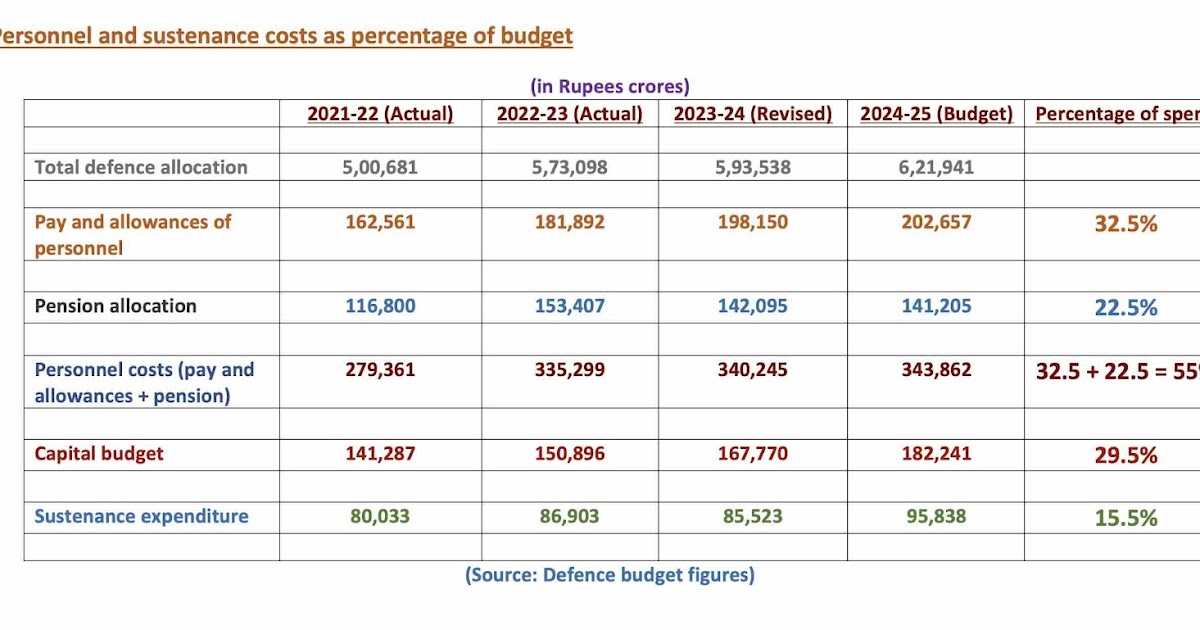
Salaries are 32.5% of the defence budget, pensions are 22.5% more, taking personnel costs to 55%
By Vikas Gupta
Defence News of India, 26th July 24
Finance Minister Nirmala Sitharaman, who was defence minister until five years ago, allocated to the Ministry of Defence (MoD) on Tuesday a budget of Rs 6.21 lakh crore – almost exactly the same amount as her Interim Budget, presented before the general elections this year.
The government says that, going by the baseline of the budget for financial year 2023-24 (FY 24), the current allocation amounts to a 4.72 per cent rise over previous year’s allocation.
As a percentage of government expenditure, Sitharaman has allocated just 13 per cent to defence, continuing a multi-year trend of falling allocations. As a percentage of gross domestic product (GDP), the defence allocations, which dipped below the 2 per cent mark last year remains below that level.
Despite the government’s “Agnipath” initiative, the government continues to grapple with the challenge of getting low-cost personnel in sufficient numbers to man the vast northern mountainous borders with China and Pakistan.
The cost of soldiers’ pay and allowances is compounded by the outgo on pensions, to which the soldier remains entitled for his entire life. After the soldier’s death, his dependent spouse or daughter continues to receive a pension at half rate.
As a consequence, the outgo on pay and allowances adds up to 32.5 per cent of the budget. In addition, pensions account for another 22.5 per cent, hiking the overall cost of personnel to 55 per cent.
The expenditure on sustenance, which is what keeps the military, its weaponry, equipment and ammunition going, adds up this year to another 15.5 per cent. That leaves less than 30 per cent of the defence budget for modernisation – or capital expenditure, as it is called.
Most modern militaries spend above 50 per cent of their defence budget on the capital account, to ensure that they go into combat with superior weaponry and equipment.
In contrast, India’s military – especially the army – continues with a personnel-heavy structure that sucks up more than half the defence allocations into payment of salaries and pensions.
At the national level, there is inadequate expenditure on the defence capital account.
The finance minister’s promise to boost the government’s capital expenditure to at least Rs 11,11,111 crore makes the DRDO’s R&D spend of Rs 13,208 crore appear inadequate.
The government’s commitment to the Agnipath project is only now beginning to drive a shift in the spending patterns for recruits and recruitment. From an inadequate Rs 160 crore allocated to the army for 2022-23, spending under that head has risen in 2023-24 to Rs 2,836 crore; while the government has allocated Rs 5,207 crore for the year 2024-25.
The navy too received substantial funding for the Agnipath project – Rs 1,500 crore for the current year. The IAF, for reasons unknown, is trailing the army and navy.






